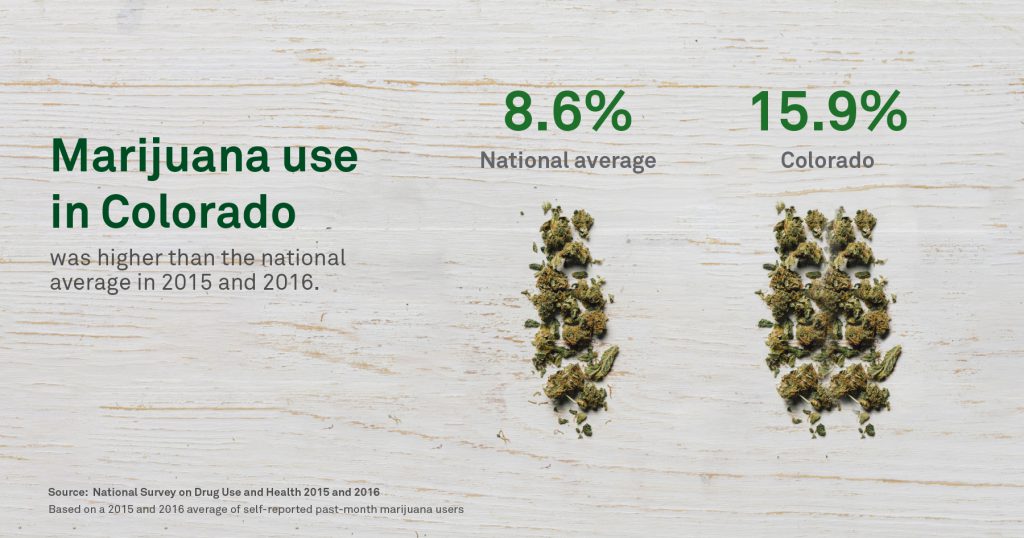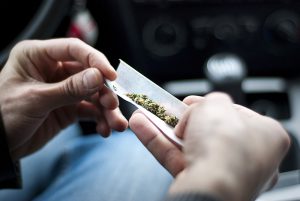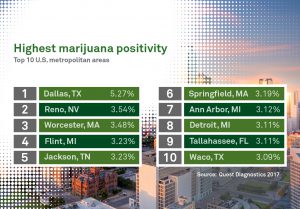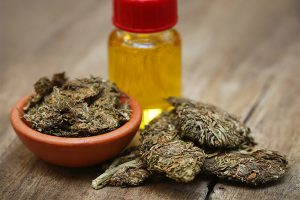
On November 6, 2012, Colorado became the first state to legalize recreational marijuana use for anyone 21 years of age and older. After five years, researchers have compiled a substantial amount of data about the effects of recreational marijuana throughout the state. One example is the financial aspect of legalizing the drug for recreational use. Last year alone, the recreational marijuana industry brought in $1.5 billion in sales according to the Colorado Department of Revenue.
The Rocky Mountain High Intensity Drug Trafficking Area released a report detailing the impact of legalized marijuana in Colorado. The report showed that 15.9% of people were self-reported past-month marijuana users compared to the national average of 8.6%. Increased drug use has impacted traffic accidents and public health in the state. A few other statistics include:
- People who visited a hospital due to marijuana use increased by 52% from 2012 to 2016.
- Traffic accidents related to marijuana use jumped from 11.43% in 2013 to 21.3% in 2017.
- Traffic deaths with drivers who tested positive for marijuana increased by 39% during the past four years, which equates to one person killed every 2 ½ days.
While it may not come as a surprise that people are using marijuana more frequently where recreational use is permitted, the parallels between increased drug use and increased dangerous activities are surprising. In a 2017 Westword poll, 48% of people who used marijuana recreationally reported going to work high and 39% said they went to work high on a weekly basis.
It is important to keep your employees and workplaces safe regardless of state marijuana legislation. Drug testing for marijuana can help to reduce injuries in the workplace, improve productivity, and reduce employee turnover.
Download our Marijuana detection using oral fluid drug testing white paper.
To learn more about marijuana, visit our website.
 Your Privacy Choices
|
Privacy Notices
|
Terms
|
Language Assistance / Non-Discrimination Notice | Asistencia de Idiomas / Aviso de no Discriminación | 語言協助 / 不䈚視通知
Your Privacy Choices
|
Privacy Notices
|
Terms
|
Language Assistance / Non-Discrimination Notice | Asistencia de Idiomas / Aviso de no Discriminación | 語言協助 / 不䈚視通知



















On November 6, 2012, Colorado became the first state to legalize recreational marijuana use for anyone 21 years of age and older. After five years, researchers have compiled a substantial amount of data about the effects of recreational marijuana throughout the state. One example is the financial aspect of legalizing the drug for recreational use. Last year alone, the recreational marijuana industry brought in $1.5 billion in sales according to the Colorado Department of Revenue.
The Rocky Mountain High Intensity Drug Trafficking Area released a report detailing the impact of legalized marijuana in Colorado. The report showed that 15.9% of people were self-reported past-month marijuana users compared to the national average of 8.6%. Increased drug use has impacted traffic accidents and public health in the state. A few other statistics include:
While it may not come as a surprise that people are using marijuana more frequently where recreational use is permitted, the parallels between increased drug use and increased dangerous activities are surprising. In a 2017 Westword poll, 48% of people who used marijuana recreationally reported going to work high and 39% said they went to work high on a weekly basis.
It is important to keep your employees and workplaces safe regardless of state marijuana legislation. Drug testing for marijuana can help to reduce injuries in the workplace, improve productivity, and reduce employee turnover.
Download our Marijuana detection using oral fluid drug testing white paper.
To learn more about marijuana, visit our website.